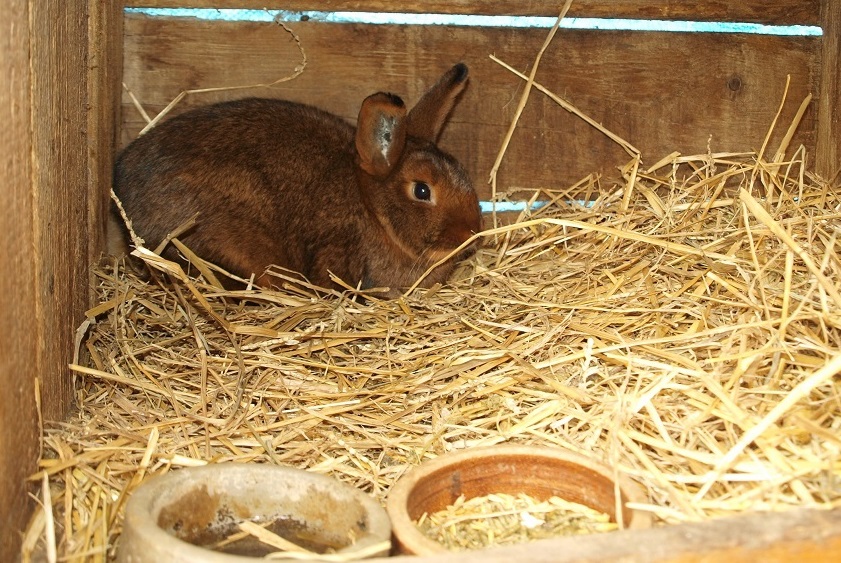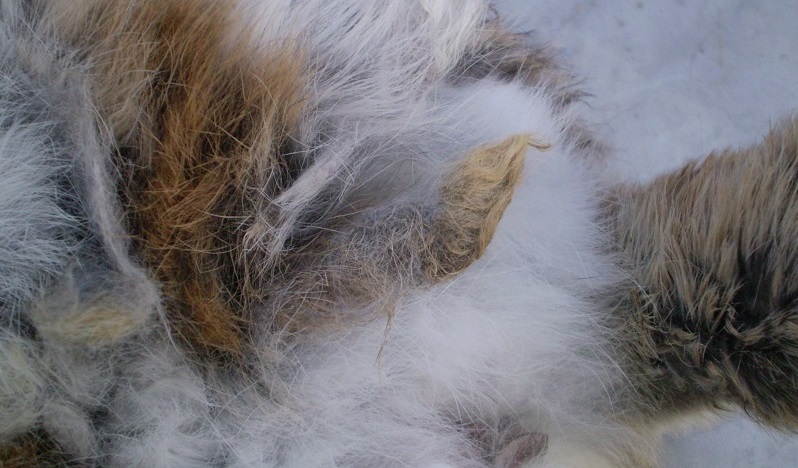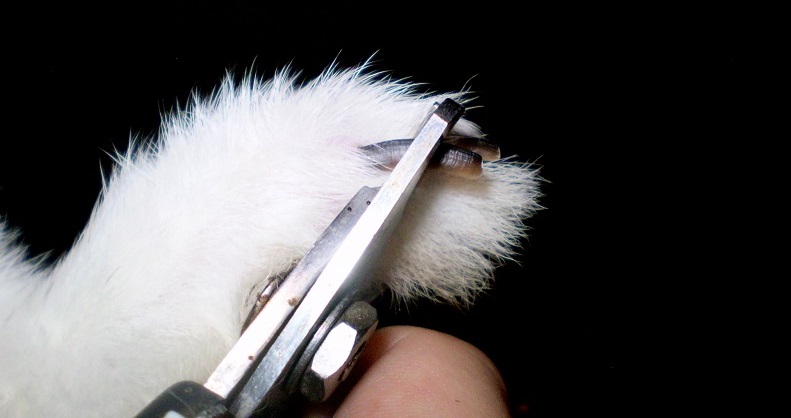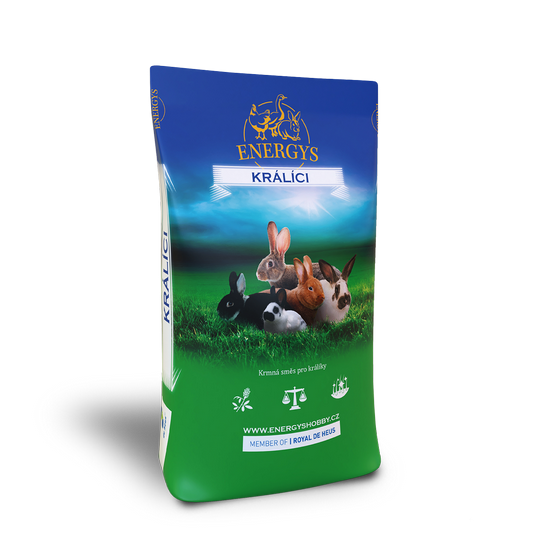Rabbits
Poultry
Laying hens
Quails
Guinea pigs
Pigs
Ostriches
Sheep and goats
Pigeons
Pheasants
Forest animals
How to take care of a rabbit
Each pet requires care that meets their demands. This involves a complex of regularly recurring practices and breeding care. Proper care in housing, feeding and providing water and handling can prevent a significant proportion of illnesses, as the good health of the rabbit is ensured. The following are the most important techniques in rabbit breeding.
Adaptation in new home
Upon arrival at a new home, it is advisable to leave the rabbit in the box for about 2-3 hours in peace. Subsequently, the rabbit is placed in a new breeding facility (pens, pet rabbits – hobby cages, etc.). For the first two to three days it is advisable to give the rabbit maximum calm for adaptation. As a general rule, as soon as the rabbit regularly receives feed and defecates, it is “won over”. The condition of the rabbit and its behavior should be checked at least once a day, ideally during feeding. If a medical condition is suspected, it is advisable to contact a veterinarian.

Vaccination of rabbits
Under the conditions of the Czech Republic there is no statutory obligation to vaccinate rabbits against disease. However, vaccination against rabbit plague and myxomatosis is recommended. The occurrence of these diseases in our country is regular and can be fatal if it attacks uninoculated rabbits. The mode of administration and the duration of specific immunity vary depending on the particular vaccine. Vaccination is carried out by a veterinarian. The vaccination interval varies according to the particular vaccine. However, vaccination twice a year is generally recommended.
Feeding and providing water
Feeding rabbits with grain feed is most often carried out once or twice a day. Between this, the rabbit should have bulky food – quality hay or straw. Grain feed is most often placed in bowls. These should be cleaned once a week and disinfected regularly. Mangers are best suited for the provision of bulky feed, but with good hygiene, the dispensed hay can also be placed on the full floor of the pen, possibly for a rest area. From a hygiene point of view, it is best to use drinkers to feed rabbits, where the water stays clean the longest. In summer or when there is a higher number of rabbits in the pen, it is better to replace and replenish water more often.
Care of fur and nails of rabbits
Rabbits require regular fur and nail care. The rabbit’s fur is structurally composed of stronger and longer guard hair, shorter semi-guard hair and a rich representation of wavy wool. This is the case with rabbits with normal fur. For these rabbits, combing through with a comb for small animals is sufficient, approximately once a week. For short-hair rabbits (so-called rex) who have a shorter coat, finer brushes are preferable. Conversely, it is necessary to comb the wool every day for long-haired Angora breeds (due to long and dense wool forming fleece) The fur is a good reflection of the general health of the animal. Such a rabbit has a thick, close-fitting and shiny coat.

The nails are a horn formation that is derived from the skin. They cover the last links of all the rabbit’s toes. The first trimming should be done around the 2nd – 3rd month of age, and then at approximately three-month intervals. Otherwise, the nails would overgrow, prevent proper walking and cause pain to the animal. The nails are trimmed with special pliers in front of the quick, which is blood-containing and innervated in the nail, to prevent bleeding.

Related posts
10. April 2024
Keeping dwarf rabbits as pets is becoming increasingly popular. It does not require a lot of space and is ideal for people who live in smaller homes or apartments. Dwarf rabbits are also very friendly, so it’s no wonder that people are choosing them for this purpose more and more often. As with all animals,…
30. August 2022
In this article we will discuss several rabbit diseases – ear scab, tyzzer’s disease and heat stress.
24. August 2022
In this article we look at two diseases – e.Coli and enterocolitis.
2. August 2022
In this article we look at two common rabbit diseases, myxomatosis and infectious rhinitis.
13. July 2022
In the following article we will discuss rabbit plague – rhd or vhd (viral haemorrhagic disease of rabbits).
Related products

RABBIT DWART
Complete pelleted feed for dwarf rabbits with high digestibility. It contains a high proportion of fibre (high alfalfa and grass cake content) and a reduced sugar and starch content. Contains flaxseed, which has a positive effect on coat quality. Suitable for daily feeding. We recommend providing rabbits with safe fresh water and hay.

RABBIT CHAMPION
Feed for show rabbits, does not include Coccidiostat. A unique mix significantly supports the quality and growth of fur. Serve when moulting and at least two months before the start of the show season.

RABBIT GOLD FORTE
A premium feed mix in an ideal make up for gestating and breast feeding females. For the intensive fattening of rabbits for a period of up to 5 days before slaughter. It supports fast growth, meat content and an excellent state of health. It contains a coccidiostat which lowers the risk of mortality.

RABBIT KLASIK FORTE
Intended for the fattening of rabbits up to a point at least 5 days before slaughter. Suitable for attaining a high meat content and an excellent state of health. Thanks to its Coccidiostat content it lowers the animals mortality.

RABBIT KLASIK
For the final phase of rabbit fattening, a minimum of 5 days before slaughter. It supports high meat content and excellent taste qualities in rabbit meat. Without a coccidiostat.

RABBIT START
For young rabbits from the start of accepting feed to 4-6 weeks after weaning. The feed helps to significantly lower the death rate in the period around weaning. It contains a raised percentage of fibre and less starch. It does not contain a coccidiostat.
